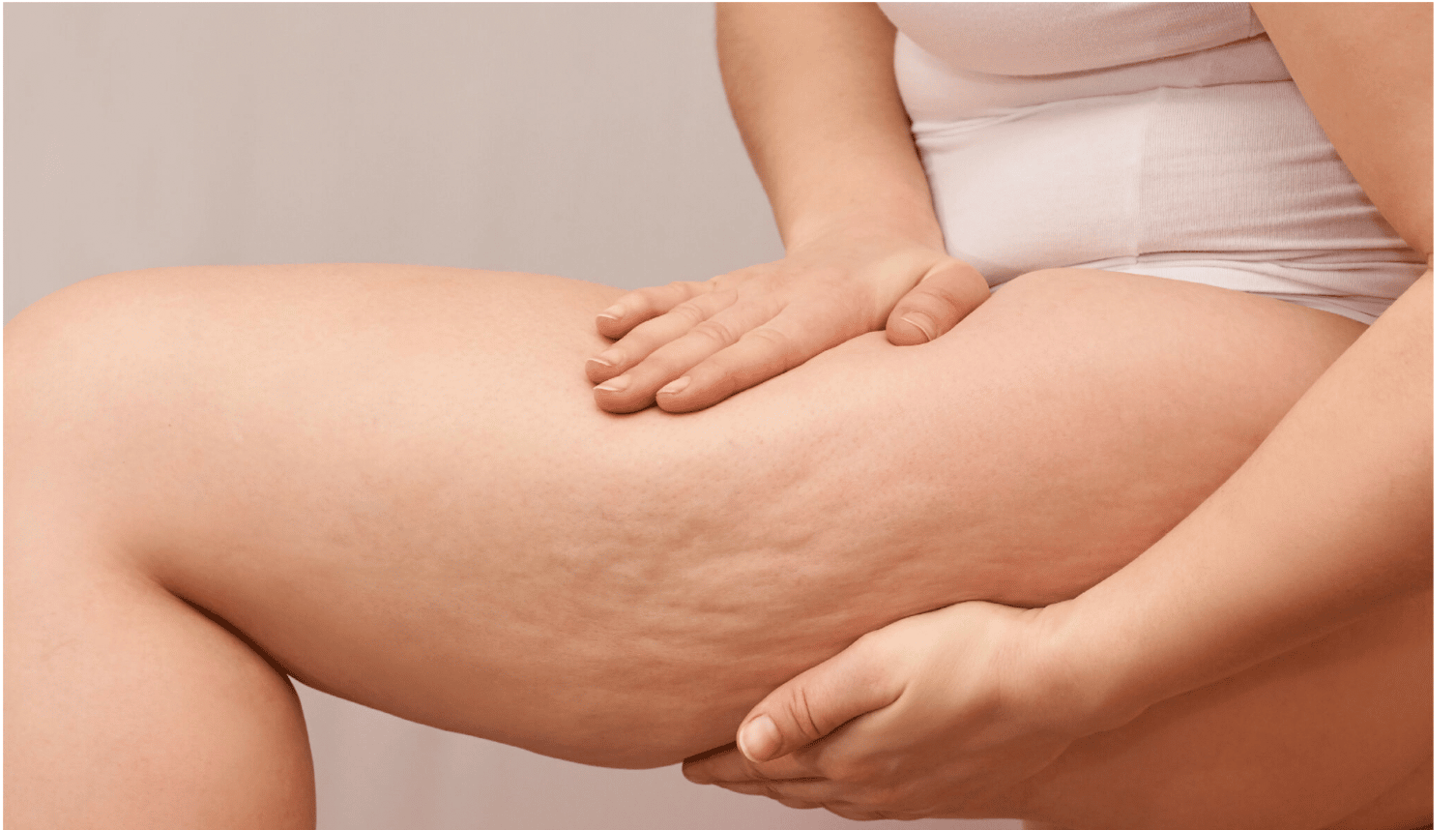
BodyLuxe Team
September 21, 2022

We have all heard the term before and many of us recognize what it looks like on our own bodies – but what IS cellulite, anyway?
Cellulite involves fibrous connective cords that tether the skin to the underlying muscle, with the fat lying between. As fat cells accumulate, they push up against the skin, while the long, tough cords pull down. This creates an uneven surface or dimpling.
There are many different causes of cellulite. Hormonal factors play a large role in the development of cellulite, and genetics determine skin structure, skin texture and body type. Other factors, such as weight and muscle tone affect whether you have cellulite, although even very fit people can have it. Weight gain can make cellulite more noticeable, but some lean people have cellulite, as well. An inactive lifestyle can increase your chances of having cellulite, as can pregnancy. Some people think they have cellulite, when in fact, they do not. For example, if you pull the skin tight in the area where you believe you have cellulite, and it disappears, that is not cellulite. That is laxity of the skin that results from the breakdown of collagen and elastin.
So now we know what cellulite is, but what are some of the causes of it?
There are a few things to keep in mind:
Structure and Volume – how much muscle vs fat do you have underneath your skin? By keeping your skin taut by having a healthy amount of muscle to fill it out, you can reduce laxity and the appearance of cellulite. To the contrary, if you have an over-abundance of fat, that can expand and push fat cells closer to the surface – causing that pulling of those fibrous bands and the subsequent dimpling of the skin.
Laxity – If your skin is not producing enough collagen and elastin, the firmness, thickness and tightness of the skin is affected. When this happens, it is easier to see the fat beneath this skin. Cellulite might not be a real issue but when the fat layer underneath the skin isn’t properly concealed, it can lead to an uneven and dimply appearance.
Now that we have discussed what cellulite is and what causes it, let’s talk about what can be done about it!
First, you will need to set up a consultation with a professional – it’s always a good idea to get a better understanding of your unique circumstances and determine, with them, what the best course of action is. Make sure to discuss all of your options and do not be afraid to do your research on them.
The two most successful options currently on the market are:
Injections: This is where a chemical substance is injected into the divet of the cellulite to dissolve the connective bands that pull down on the skin’s surface. That pulling is what causes the dimpling of the skin and the appearance of cellulite. This method is great for smaller, less severe cases of cellulite.
Surgical: During this process, a surgeon will create a subcision and use a small instrument to physically cut those bands and allow for that smooth surface you are seeking. This method can be more precise and a better option if there is a large and concentrated amount of cellulite in the area.
Alternatively, there are some injectable products on the market, including Sculptra and Radiesse that act as “fertilizers” for collagen and elastin production in the area of injection. By doing this, you will create a thickening and tightening of the skin and improve the overall quality and texture. This can be a great option if laxity or general aging of the skin is your main issue/concern.
Cellulite is not something that will ever completely resolve, no matter how you choose to address it. Please keep in mind that, while you will most likely experience success with one or more of these treatments, at some point, you will need maintenance.
Do you have more questions? Give us a call!
The leaves are changing, and so can you. This Fall, BodyLuxe invites you to harvest your confidence and reveal your most sculpted self.
Take up to $4,200 off our most-loved procedures — FormSculpt® Lipo, Brazilian Butt Lift, Fat Transfer (to Breasts or Hands), Skin Tightening, or a Mini Tummy Tuck — and step into sweater weather feeling sleek, sculpted, and radiant.
This limited-time Fall Into Luxe offer ends November 30, and appointments are booking fast.
🍁 Tap below to reserve your consultation and let BodyLuxe shape the look you’ll love showing off all season long.